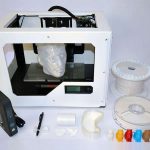 3D printing is a topic I’ve touched upon many times in the past few years, not least in the healthcare field, where its range of applications has grown considerably in recent months. These were highlighted in a recent paper from the University of Melbourne.
3D printing is a topic I’ve touched upon many times in the past few years, not least in the healthcare field, where its range of applications has grown considerably in recent months. These were highlighted in a recent paper from the University of Melbourne.
“At the moment 3D printing is at the cutting edge of medical research, but in the future the technology will be taken for granted by all of us in healthcare,” the authors say.
Supporting elderly care
Research from Keio University, in Tokyo, highlights how it can also be valuable in care home environments. With the Japanese population ageing rapidly, the demand for care facilities will grow considerably in the near future. With insufficient nursing staff to meet this demand, IT will have to take up more of the slack.
Central to this is a growth in the number of 3D printers in community care facilities throughout Japan. The researchers monitored the use of these facilities and identified three core types of use case:
- Self-help devices that allow individuals to perform specific tasks. For instance, a person with paralyzed fingers could construct a 3D printed penholder to allow them to grip a pen.
- Tools to facilitate better communication between care-givers and care-receivers. For instance, medical equipment might be constructed in fun shapes to help overcome any negative perceptions the patient may have.
- The creation of educational objects to help care-givers learn how to perform various therapy actions. For instance, a semi-transparent cranial model was used to practice the insertion of a special tube to vacuum phlegm from the patient’s throat.
The team believe that for the technology to advance further, it needs the costs associated with it to fall, both in terms of the up-front costs and the variable costs of operating the printers. There are signs that this is happening however, with some early adopters making good use of the technology.
A good example of this in action is MakerNurse, who I covered a few years ago. It’s a project that uses 3D printing technology to allow nurses to build their own fixes to challenges as they arise.
“We promised the nursing world that we’re not here to take your ideas. We want to develop tools,” the founders said “Our dream was to make a medical maker space inside a hospital that was really suited for health care professionals.”
Whilst MakerNurse are very much at the edges at the moment, the signs are good that 3D printing will become more prominent in hospitals and care facilities in the coming years.